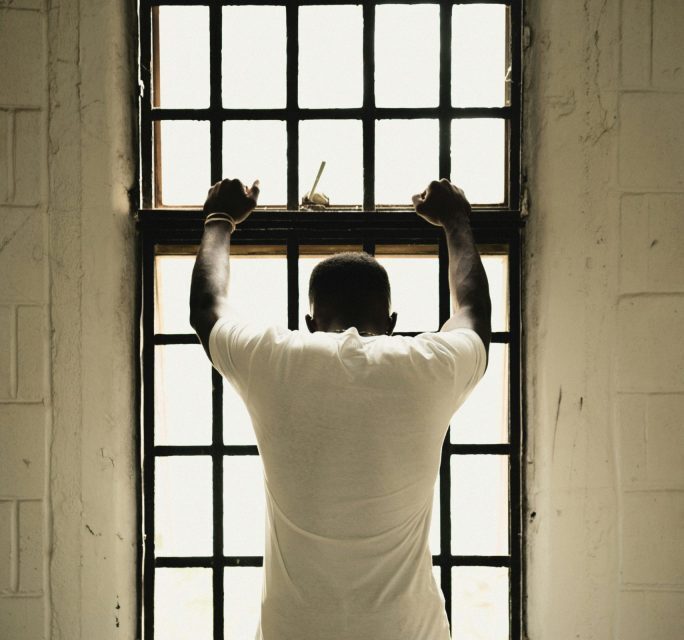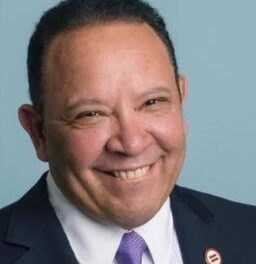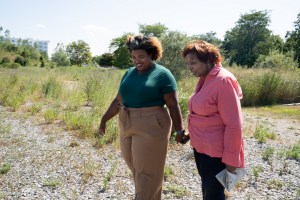By D. Kevin McNeir
Special to the AFRO
In this series the AFRO speaks to America’s incarcerated population, who face great physical hardship and emotional challenges– especially in states with little regard for inmate welfare. This series will examine the variety of reasons Black people face higher rates of incarceration and recidivism when compared to other ethnic populations. In addition, we speak with grassroots activists, returning citizens and advocates about being on the inside of the prison industrial complex and the impact of its revolving door.

On a warm August night, several dozen citizens from the Greater Washington Area, mostly African-American men, gather at the Busboys and Poets in the Southeast D.C. community of Anacostia. The topic of discussion: the ongoing challenges facing the formerly incarcerated and the need for more programs that support their successful reentry into society.
During the two-hour session, returning citizens share stories of resilience, redemption and success, hoping to empower and motivate others as they seek to break barriers imposed by society and to realize their dreams.
This is just one outlet for those seeking relief from their experiences in the criminal justice system. For Ahmar “Brother Khan” Mustikhan, a writer and community activist, it is crucial work.
Mustikhan served as moderator for the Aug. 3 Busboys and Poets event, titled “If You Have a Dream You Can Make It: Formerly Incarcerated Share Success Stories.” Several D.C. legends including Tyrone Parker and Roach Brown joined the conversation, speaking as both returning citizens and advocates for others who survived years and even decades behind bars.
Khan described the event as an opportunity to connect with a community that believes in second chances and to show support for those who have managed to overcome adversity.
No testimony without a test
Parker, 76, a native Washingtonian who now lives in Laurel, Md., spent 38 years in prison. The conviction on two counts of robbery cost him nearly four decades in prison–most of it spent at Lorton Reformatory, a former prison complex in Lorton, Va., located about 20 miles outside of the nation’s capital.
Also known as the Lorton Correctional Complex, the facility, which closed in November 2001, once served as a prison for nonviolent offenders from D.C. before coming under the control of the District of Columbia Department of Corrections in 1946.
Parker said he considers himself fortunate to have been sent to Lorton because it–unlike most penal institutions–promoted work programs that allowed inmates to regularly engage with the local community as volunteers.
“The first thing that helped me turn my life around was God – no question. But the second thing was my gaining an understanding of my own value and my importance to my community,” Parker said. “Lorton was a progressive facility that promoted sending its inmates–all 300 of us–to parts of D.C. and Virginia where we learned about responsibility.
“We were a volunteer movement that worked with the handicapped, supported youth in public schools and went wherever else we were needed. As a result of our day-to-day encounters, we not only helped to transform the greater community, but we underwent our own personal transformations,” he said.

Parker would use many of the skills he acquired and lessons learned while incarcerated to establish The Alliance of Concerned Men (ACM), a nonprofit he began in 1991 with former high school friends. Parker previously served as the executive director.
Now, more than 30 years later, ACM employs a “village approach” as they work to eradicate violence in local communities. The group has brokered more than 80 peace agreements and truces between rival gangs in areas identified as “hot spots” in D.C.
Brown, 80, was born and raised in D.C. but now lives in Suitland, Md. Today, he’s a successful host of “Crossroads,” a radio broadcast heard around the world. Today, he addresses problems faced by those returning citizens and those currently incarcerated.
Like Parker, Brown was sent to Lorton, after being sentenced to life in prison at the age of 20 in 1964 for being part of a trio of robbers whose actions led to the death of another man.
“I was physically attacked multiple times in prison,” he said. “I was paralyzed for a while, I was placed in solitary confinement and even sent to St. Elizabeths for three years after both my mother and father died and I was diagnosed as temporarily insane,” he said, speaking of the public psychiatric hospital located in Washington, D.C.
“After being returned to Lorton after my release from the [St. Elizabeths], I started writing to clear my head and wrote a Christmas story that evolved into a play,” Brown said. Soon, he found like-minded individuals, who wanted to express themselves using performance theatre.
“We called ourselves ‘Inner Voices’ and the play and our performances became so popular that we were allowed to go on tours – some locally and even a few in other parts of the country, including the Apollo Theater in New York City. We even did a show that was headlined by Richard Pryor.
“We were allowed to go out and perform more than 500 shows and we returned to Lorton every time without any incidents. Then, in 1975, after first being turned down by former President Richard Nixon, former President Gerald Ford granted my request for a pardon and I was released from prison. I was determined to make the most of receiving a second chance,” he said.
Recidivism rates disproportionately high for Black men
By age 25, 15.9 percent of Black males, 6.3 percent of Hispanic males and 1.7 percent of White males are expected to have served some time in state or federal prison. By age 40, 26.6 percent of Black males, 12.7 percent of Hispanic males and 3.5 percent of White males will have served time.
The Department of Justice routinely conducts long-term studies on all things related to incarceration. In 2018 they released an updated report on recidivism rates for state prisoners in 30 different states. The report initially surveyed returning citizens from 2005 to 2009, to see how many were arrested after their release. Roughly 44 percent were re-arrested in the first year.
The report looked at how many people were rearrested year after year for nine years.

“Five years after release from prison, Black offenders had the highest recidivism rate (81 percent), compared to Hispanic (75 percent) and White (73 percent) offenders,” according to information released by the Bureau of Justice Statistics in 2014, year nine of the study.
The report found that a total of 83 percent of prisoners in the study were re-arrested within nine years of their 2005 release. By 2014, 86.9 of all Black prisoners in the study had been rearrested after their 2005 release. That number was 85 percent for the American Indian or Alaska Native Asian, Native Hawaiian or Other Pacific Islander prison population, and 81.3 for Hispanics / Latinos.
Still today, incarceration and recidivism rates remain high across all race and ethnicity groups. The U.S. Census reports that Black people made up 12.4 percent of the population in 2020, and 12.6 percent of the population in 2010. Still, they show up disproportionately in the prison systems of America. The Federal Bureau of Prisons, for example, reports that 38.8 percent of prisoners were Black as of Aug. 24.
Both Parker and Brown represent the minority when it comes to Black men who once spent time behind bars.
When asked why they believe that Black men have a high recidivism rate among those formerly incarcerated, the two men differed in their responses.
“In D.C.’s Ward 8, where most of the inmates from this area lived before being arrested and convicted– and to where [they] are returned upon their release– it’s a community of mostly disenfranchised people,” Parker said. “The prison system feeds off of them. At the same time, Blacks continue to suffer from a lack of everything: lack of jobs, poor healthcare, inadequate education and lack of affordable housing.
“Returning citizens need a solid base – a family – to support them when they’re released. They need constructive programs to teach them how to be part of a family or in some cases, to lead their family,” said Parker. “For some young Black men, the only thing they know is based on a culture of self-destruction – they learn it as children and it’s passed on from one generation to another. Being incarcerated, and repeatedly returning to prison, is nothing more than a new form of slavery.”
Brown agreed and lamented that until America changes its priorities, far too many Black families will continue to be ravaged by disproportionate rates of incarceration.
“While I believe that Americans care about the injustices routinely faced by those in our nation’s prisons and jails, Black [people] in particular just have too many other things to worry about – things that take priority, like ensuring they have enough to eat, have a place to live and have a job, not to mention racism in general,” Brown said.
“It’s rare to find a Black family that doesn’t have someone who is or has been incarcerated. At the least, they’ve gotten a call from someone they care about who has been arrested and needs help,” said Brown. “It’s wrong to consider all Black men as criminals. I think most brothers commit crimes of need, not crimes of greed.”
Brown continued, adding that “People who don’t have a job or a home – people who are broke, broken and homeless – will do whatever is necessary to survive. When I was a little boy and D.C. was very segregated, even if you had a job, you had to hustle. You needed to supplement the family’s income just to survive. So, most of us, if we had a job, stole from that job. My take home pay wouldn’t take me home.”
Over time, however, he knew he had to change.
“How did I get my life in order? I eventually got tired of getting in the ring and getting knocked down again and again. It was like fighting Mike Tyson seven days a week,” he said. “I reached the point where I was done with experiencing the overdose of pain and I wanted something else – something different, something better.”
The post On the inside: Rehabilitation programs key in successful reentry and anti-recidivism efforts appeared first on AFRO American Newspapers.











